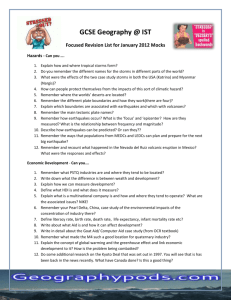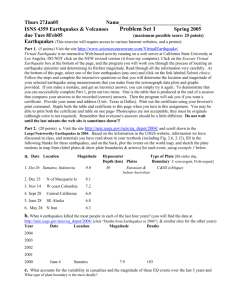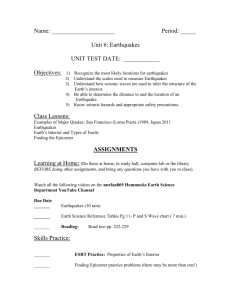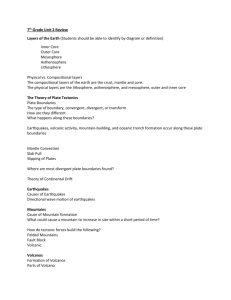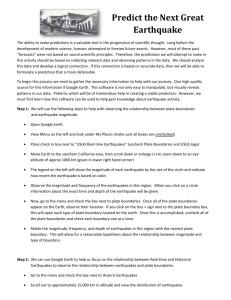earthquakes notes
advertisement
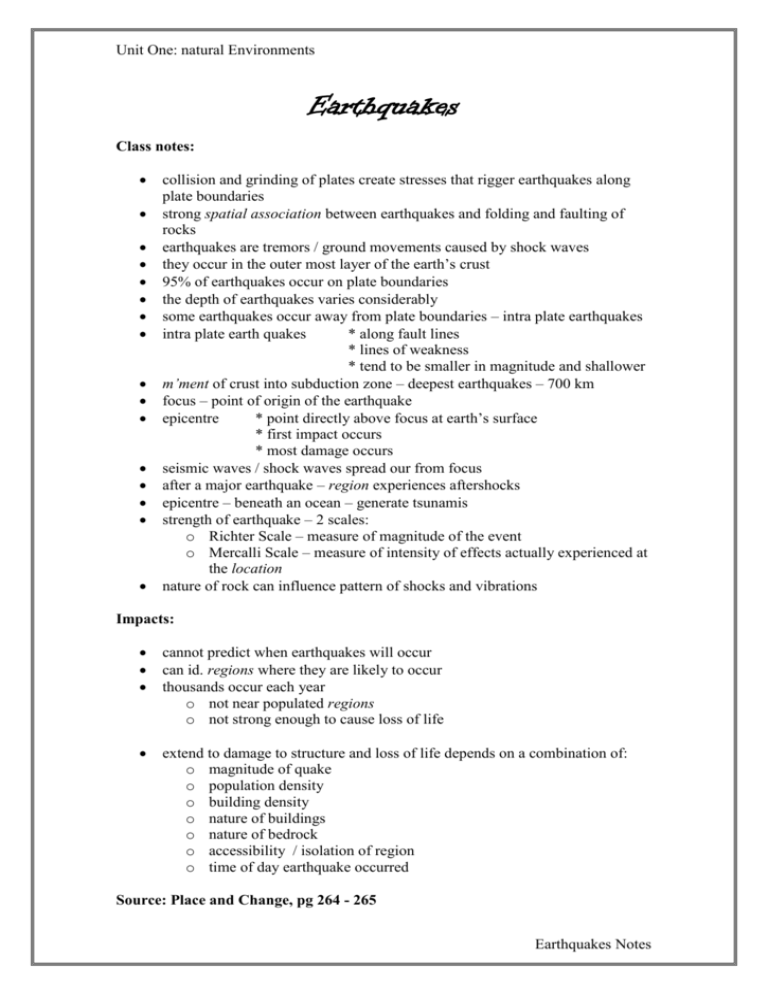
Unit One: natural Environments Earthquakes Class notes: collision and grinding of plates create stresses that rigger earthquakes along plate boundaries strong spatial association between earthquakes and folding and faulting of rocks earthquakes are tremors / ground movements caused by shock waves they occur in the outer most layer of the earth’s crust 95% of earthquakes occur on plate boundaries the depth of earthquakes varies considerably some earthquakes occur away from plate boundaries – intra plate earthquakes intra plate earth quakes * along fault lines * lines of weakness * tend to be smaller in magnitude and shallower m’ment of crust into subduction zone – deepest earthquakes – 700 km focus – point of origin of the earthquake epicentre * point directly above focus at earth’s surface * first impact occurs * most damage occurs seismic waves / shock waves spread our from focus after a major earthquake – region experiences aftershocks epicentre – beneath an ocean – generate tsunamis strength of earthquake – 2 scales: o Richter Scale – measure of magnitude of the event o Mercalli Scale – measure of intensity of effects actually experienced at the location nature of rock can influence pattern of shocks and vibrations Impacts: cannot predict when earthquakes will occur can id. regions where they are likely to occur thousands occur each year o not near populated regions o not strong enough to cause loss of life extend to damage to structure and loss of life depends on a combination of: o magnitude of quake o population density o building density o nature of buildings o nature of bedrock o accessibility / isolation of region o time of day earthquake occurred Source: Place and Change, pg 264 - 265 Earthquakes Notes

